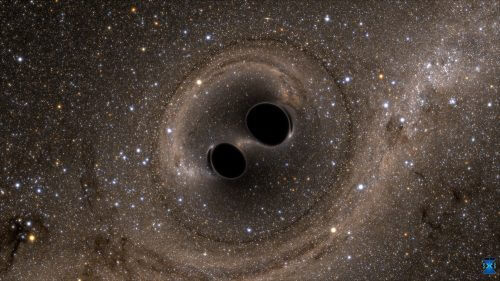The Nobel Physics Prize Committee announced this morning the awarding of half of the 2017 Nobel Prize in Physics to Rainer Weiss, and the other half to Barry Barish and Kip Thorne, all three from the LIGO/VIRGO partnership

The Nobel Physics Prize Committee announced this morning the awarding of half of the 2017 Nobel Prize in Physics to Rainer Weiss, and the other half to Barry Barish and Kip Thorne, all three from the LIGO/VIRGO partnership.
"On September 14, 2015, gravitational waves were observed in the universe for the first time, the waves, whose existence was predicted by Albert Einstein about a century ago, come from the merger of two black holes. It took these waves 1.3 billion years to reach the pair of LIGO detectors in the USA." It was written in the announcement of the Nobel Prize Committee.
"The signal was extremely weak when it reached Earth, but this promises a revolution in astrophysics. Gravitational waves are a completely new way of viewing the most violent events in space and test the limits of our knowledge," the award committee said in a statement.
LIGO, R.T. of: Laser Interferometer Gravitational-Wave Observatory is a partnership in which over a thousand researchers from twenty countries work. Together they realized a vision of almost fifty years. The Nobel laureates succeeded thanks to their courage and determination to bring about this valuable success of LIGO. Pioneers Rainier Weiss and Kip Thorne along with Barry Barish, the scientist and leader who brought the project to completion, promised that four decades of effort would eventually lead to the discovery of gravitational waves.
In the mid-seventies, Weiss analyzed the possibility of sources of background noise that might interfere with measurements, and designed a detector - a laser-based interferometer, which would overcome the noise at an early stage. Both Kip Thorne and Rainer Weiss were convinced that gravitational waves could be detected and thus bring about a revolution in our knowledge of the universe.
Gravitational waves spread at the speed of light, filling the universe, as Einstein predicted in the theory of general relativity. They are formed when large masses are accelerated, like pirouettes of ice skaters, black holes also orbit each other. Einstein was convinced that they could never be measured. The achievement of the LIGO project was the use of a pair of giant laser interferometers to measure changes thousands of times the size of an atomic nucleus that occur when gravitational waves traverse the Earth.
So far, all types of electromagnetic radiation and particle radiation such as cosmic rays or neutrinos have been discovered during the exploration of the universe. However, the gravitational waves are direct witnesses to a disturbance in the fabric of space-time itself. It is something completely different, opening up unseen worlds, a wealth of discoveries awaiting those who continue to capture the gravitational waves and decode their messages.
Extended articles later today
More of the topic in Hayadan:
- A collaboration between three observatories resulted in another discovery of gravitational waves (Article from September 2017)
- A new detector will determine the origin of gravitational waves
- What are gravitational waves?
- Proof of Einstein's theory of general relativity: "The discovery of gravitational waves opens a new window to the universe"
- First evidence for the discovery of gravitational waves
- Einstein's mistakes
- Gravitational waves: the most important discovery of 2016 according to the editors of Science magazine
- A third gravitational wave event has been discovered; Confirms the existence of a new type of black holes
